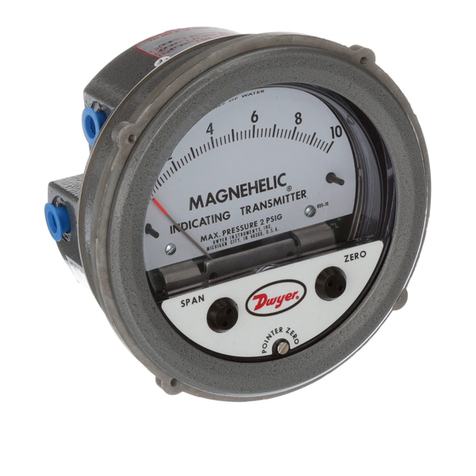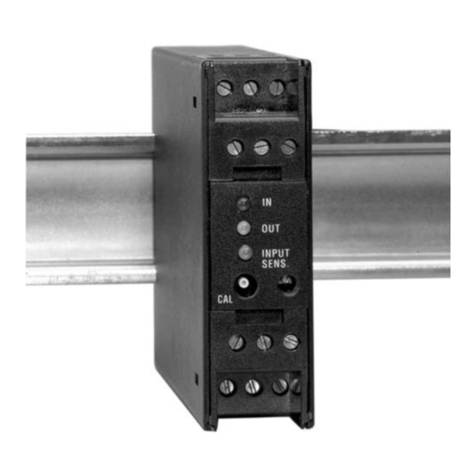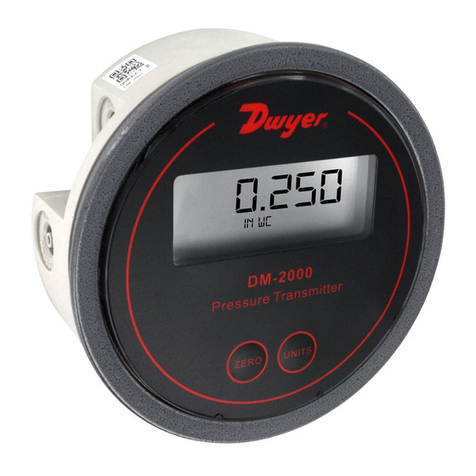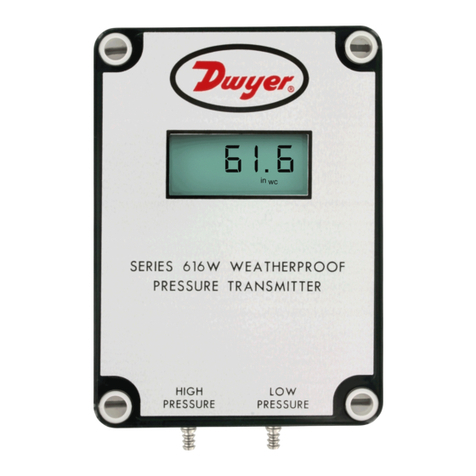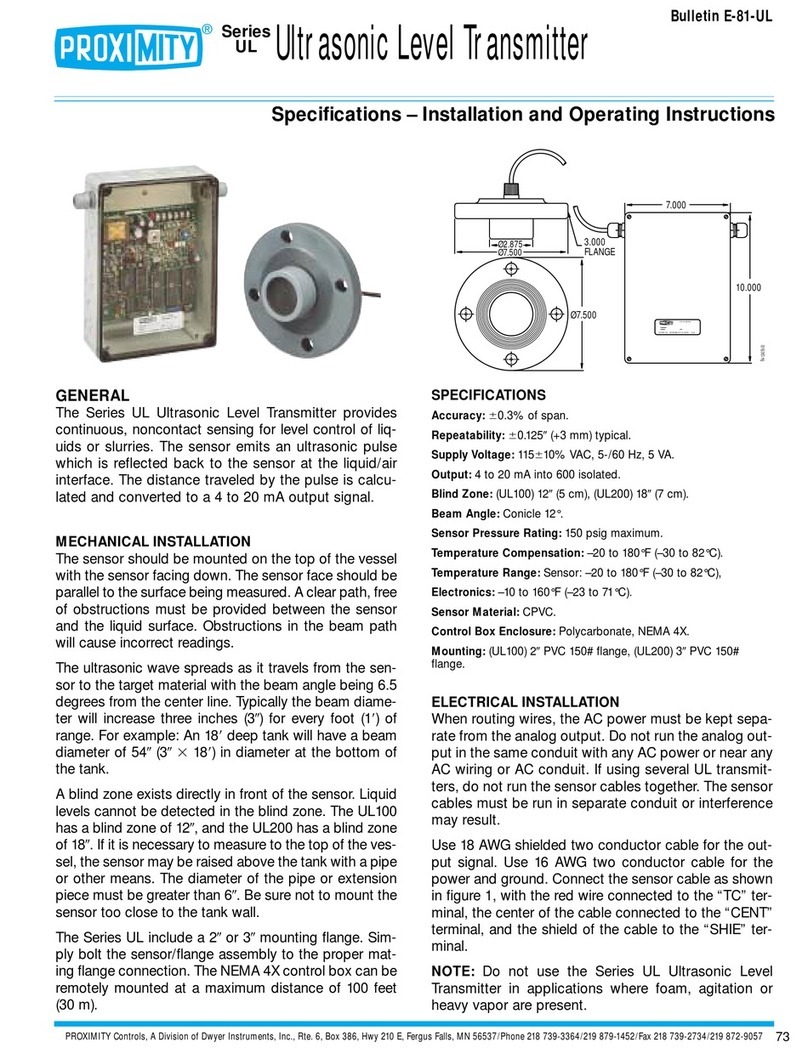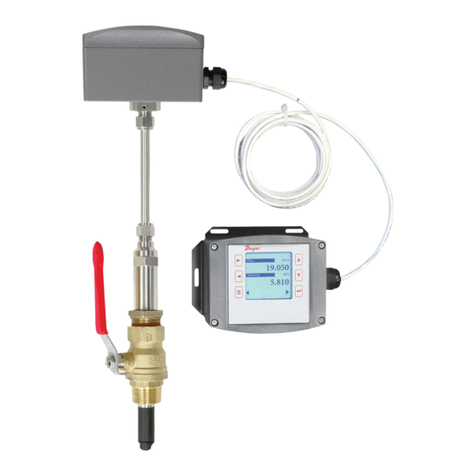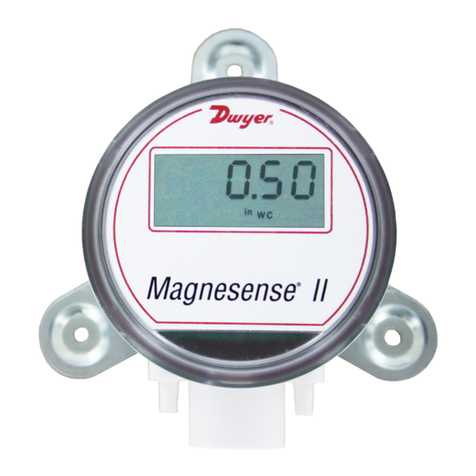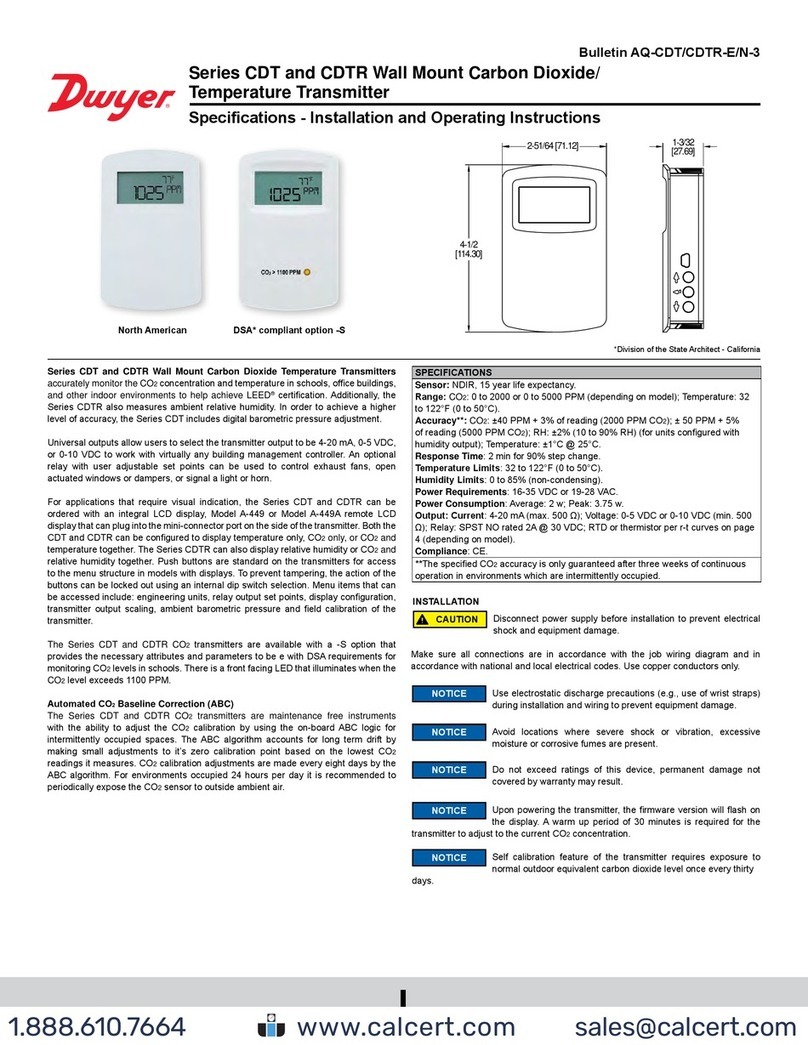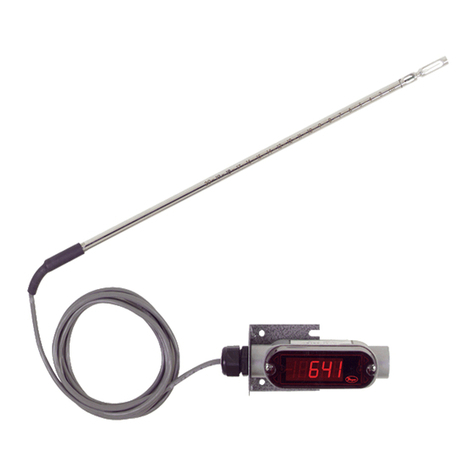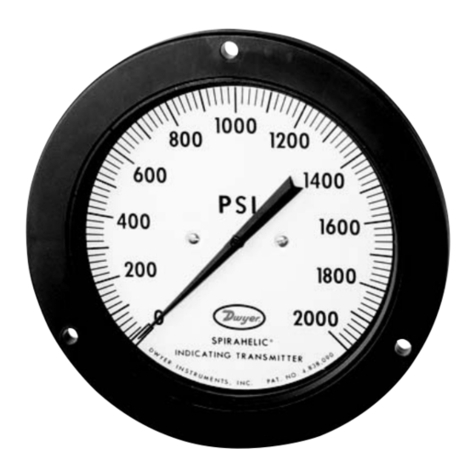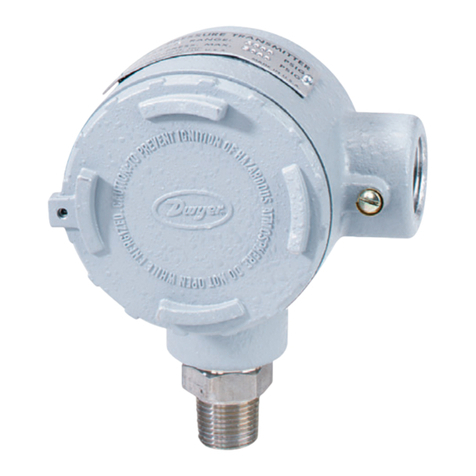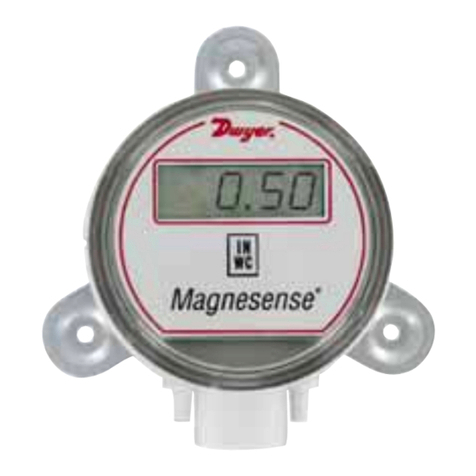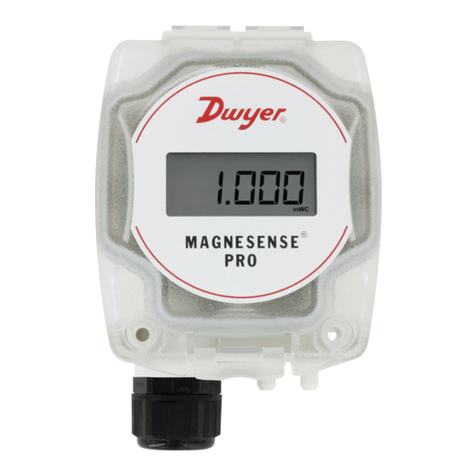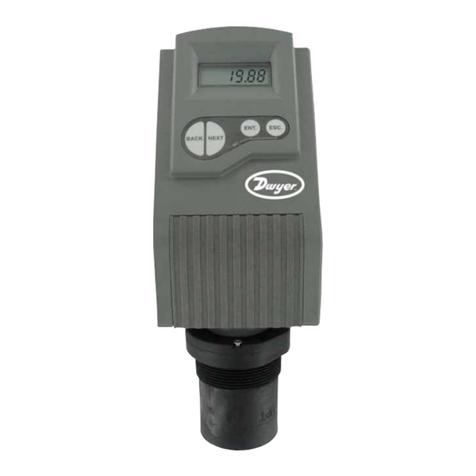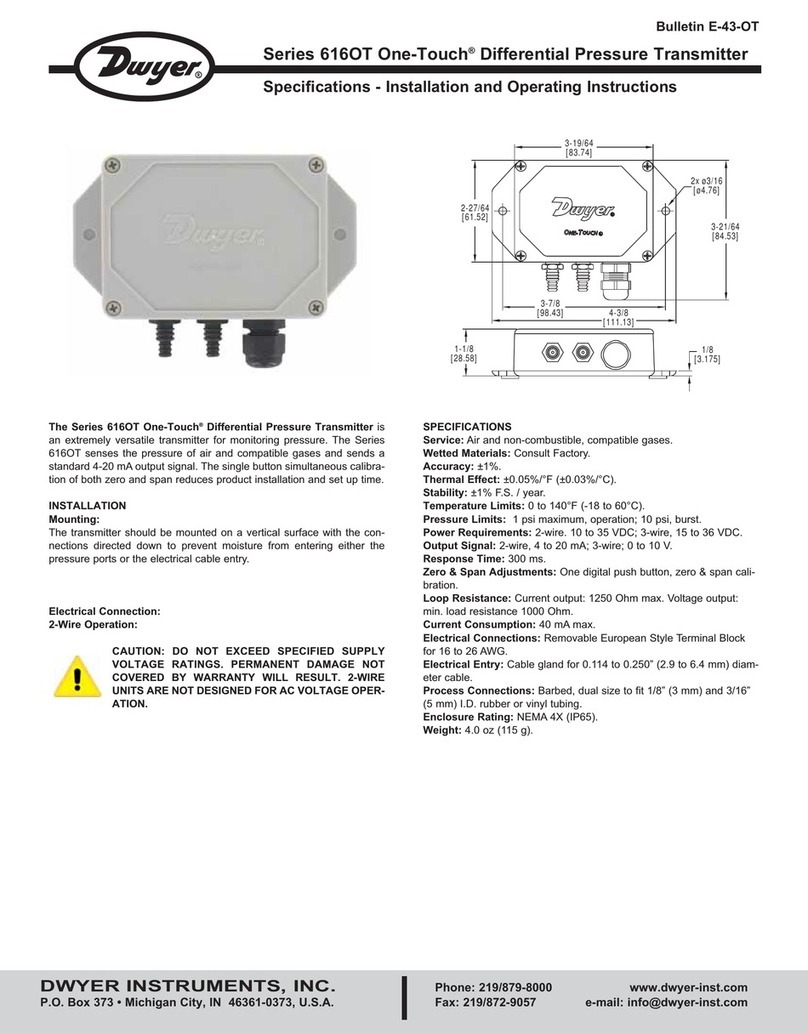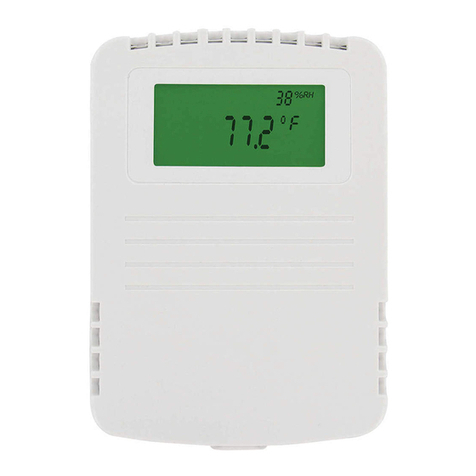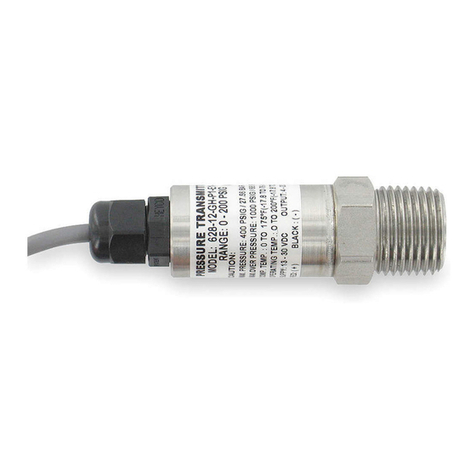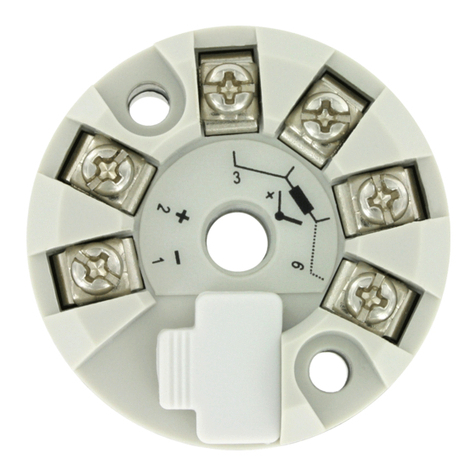
4. Dual Set Point Manual Reset: Circuit Style HH may also be
used for manual reset applications where it is desired to have
maintained contact on either relay following pressure
increase above its set-point. Load or signal connections are
made to the appropriate terminals in Sections A and D (as in
paragraph 3 above). Connect terminals in Sections B and C
through normally closed switches or push buttons as shown
in Fig. F. Use of “dry-circuit” type switches such as Dwyer
Part No. A-601 with paladium, gold, etc. or rotary wiping
action type contacts is recommended. Make external ground
connections as required and connect power to Section E for
the control unit.
Circuit style LL is used for manual reset applications which
require that contact be maintained following pressure
decrease below the set-point. Load connections are made to
the appropriate terminals in Sections A and D. A normally
open type manual reset switch such as Dwyer Part No. A-601
is connected to the terminals in Sections B and C. The circuit
must be reset or “armed” by momentarily closing the switch
while the black pointer is to the right of the set-point. From
that point on, the circuit will latch on pressure decrease
below the set-point and remain latched on pressure increase
until manually reset with the optional switch.
5. Dual Set Point Automatic and Manual Reset Combinations:
Circuit style HH may be used with either set-point wired and
operating with automatic reset as described in paragraph 3
above and other set-point wired and operating with manual
reset as described in paragraph 4.
6. High Low Limit Control – Dual Set-Point: Circuit Style HH
may be used to control fans, dampers, pumps, etc., between
the set-points of a PHOTOHELIC®. To accomplish this, use
one set-point relay to reset the other as shown in the wiring
diagram Fig. G. In this typical application, the load (for
instance a fan) would be connected to the N.C. contacts of
the right set-point relay, Section A (Fig. D). On pressure rise
to the right set-point, its relay would pull in and hold even
though pressure might then fall below that set-point. If the
pressure continued to fall to the left set-point, its relay would
automatically be DE-ENERGIZED, returned to its normal
position and in so doing, open the holding coil circuit from
Section B (Fig. D). The right set-point relay would thus be
reset and the cycle could repeat.
7. Dual Set-Point Special Purpose Circuits: Circuit Style LL
may be used where manual reset following maintained con-
tact on pressure decrease to either set-point is desired.
Circuit Styles HL and LH are combination units. For special
combinations of features, special units, and detailed instruc-
tions regarding their use, consult the factory.
8. Single Set-Point PHOTOHELIC®:The single set-point
PHOTOHELIC® is furnished with the right set-point only.
Terminals in Sections A and B (Fig. D) are connected to this
relay. Circuit Style SRH is wired for automatic reset as in
paragraph 3 above. Manual reset is accomplished by adding
a normally closed reset switch or push button to the circuit
as described in paragraph 4 above.
9. Single Set-Point Special: Manual reset after actuation on
falling pressure can be obtained by using Circuit Style SRL.
Consult the factory for special units and detailed instructions
regarding their use.
10. Placing in Service: In normal operation each relay is de-
energized when the pressure applied to the instrument is
below its set-point. Special low-latching units will ordinarily
have to be reset before placing on the line in normal opera-
tion.
11. Failure Mode: The PHOTOHELIC®circuit design provides
certain protection in the event of a loss of pressure or elec-
trical power. In either case, both relays will de-energize,
returning to their normal “zero pressure” state. The excep-
tions to this are models with center zero ranges. Because the
relays on all standard models are always energized when the
indicating (black) pointer is to the right of their respective set
points, the relay action on loss of pressure will depend on
set-point position, since either of them could be located to
the left of zero. As an example; if the left pointer were set at
-2 in. w.c. and negative pressure was -3 in w.c., a loss of that
pressure would allow the black pointer to return to the cen-
ter and thus cause the low set-point relay to energize.
If the LED should burn out, only the left-low relay will de-
energize. The right-high relay will react as if pressure were
above its set-point and will remain energized even though
pressure might be below that setting. In this situation, only
termination of electrical power will allow the right-high relay to
de-energize.
RESET
NC
NO
RESETNC
NO
HI LO
CNO NC NC NO C
C
NO NC NC NOC
L2L1
1/3 HP*
120 V
LOAD
RESET JUMPERS
Fig. F
Fig. G
CAUTION: Do not apply electrical current to
terminals in Sections B and C.
Manual Reset with Circuit HH
★Note: For larger motors, use the Photohelic®in a main-
tained contact, 120 Volt Control or Push Button Circuit of
the motor starter.
3
Northeast Controls Incorporated
P.O. Box 275 - Upper Saddle River, New Jersey 07458 USA
